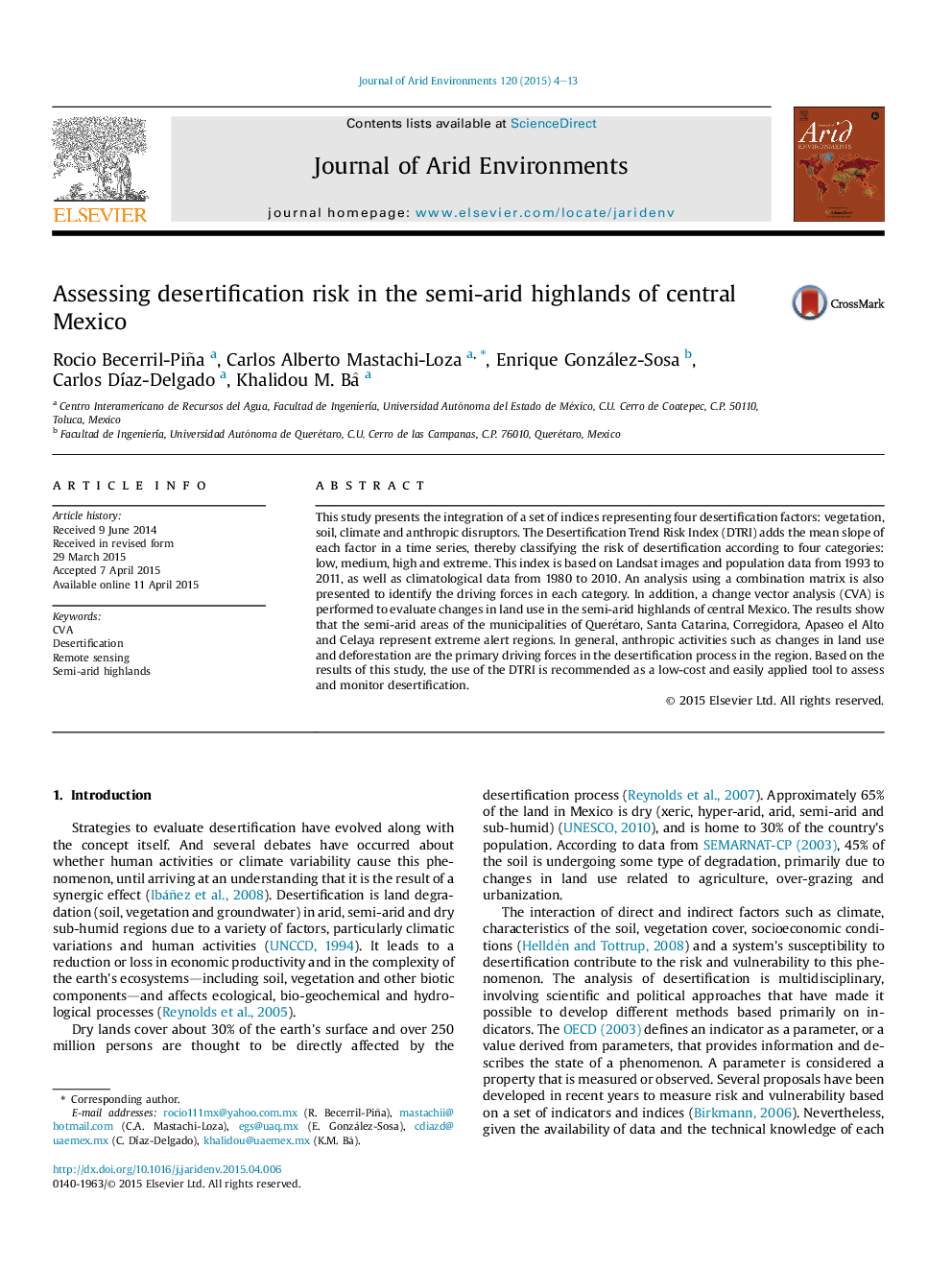| Article ID | Journal | Published Year | Pages | File Type |
|---|---|---|---|---|
| 4392820 | Journal of Arid Environments | 2015 | 10 Pages |
•Seven indices representing vegetation, soil, climate and anthropic factors were used.•We identified the driving forces acting over the desertification.•Human activities are the principal driving forces in the study area.
This study presents the integration of a set of indices representing four desertification factors: vegetation, soil, climate and anthropic disruptors. The Desertification Trend Risk Index (DTRI) adds the mean slope of each factor in a time series, thereby classifying the risk of desertification according to four categories: low, medium, high and extreme. This index is based on Landsat images and population data from 1993 to 2011, as well as climatological data from 1980 to 2010. An analysis using a combination matrix is also presented to identify the driving forces in each category. In addition, a change vector analysis (CVA) is performed to evaluate changes in land use in the semi-arid highlands of central Mexico. The results show that the semi-arid areas of the municipalities of Querétaro, Santa Catarina, Corregidora, Apaseo el Alto and Celaya represent extreme alert regions. In general, anthropic activities such as changes in land use and deforestation are the primary driving forces in the desertification process in the region. Based on the results of this study, the use of the DTRI is recommended as a low-cost and easily applied tool to assess and monitor desertification.
